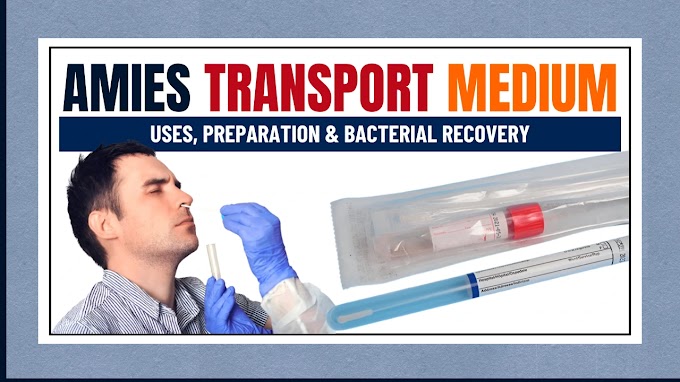Clostridium perfringens is a fascinating yet dangerous bacterium that is often referred to as the "cafeteria germ" due to its association with food poisoning in settings where large quantities of food are prepared and served. This blog dives into the characteristics of this bacterium, its effects on human health, and the necessary precautions to take to avoid its harmful consequences.
What is Clostridium perfringens?
Clostridium perfringens belongs to the family Clostridia, which are obligate anaerobes—organisms that thrive in environments devoid of oxygen. These bacteria are unique in that they lack the enzymes catalase or superoxide dismutase, making oxygen toxic to them. In their natural habitat, they flourish in deep, compact soil. When exposed to fresh, oxygenated air, they often respond by producing spores. These spores are highly resilient, capable of withstanding harsh conditions, including cooking. Once favorable conditions return, such as during slow cooling or improper storage of food, the spores can germinate and develop into active Clostridia.
Growth Characteristics
At an optimum temperature, Clostridium perfringens exhibits one of the fastest growth rates among bacteria. In laboratory settings, when performing a Gram stain, Clostridium perfringens appears Gram-positive, meaning it stains purple, and it is characterized by its large, cylindrical rod shape, also known as bacilli.
The Cafeteria Germ: How It Contaminates Food
This bacterium is a frequent cause of food poisoning and is commonly nicknamed “the cafeteria germ.” This nickname arises from its tendency to infect food prepared in large quantities and kept warm for extended periods, as is typical in cafeterias or buffets. Clostridium perfringens is naturally present in the environment and can contaminate food that has been left out for too long. When a person consumes food contaminated with C. perfringens, the bacteria quickly colonize the gut.
Clostridium perfringens Enterotoxin (CPE)
Within 24 hours, the bacteria begin producing clostridium perfringens enterotoxin, or CPE. The CPE specifically targets the tight junctions that hold the epithelial cells lining the intestines together. When these tight junctions are destroyed, it leads to inflammation and weakens the structural integrity of the intestinal wall. Fortunately, CPE is heat-labile, meaning it can be inactivated by prolonged cooking at 72°C or higher. This is one reason why freshly cooked food is the safest option to consume—and it also happens to taste better!
Symptoms of Food Poisoning
Symptoms of Clostridium perfringens include abdominal cramping, watery diarrhea, and vomiting. Thankfully, these symptoms usually improve within a day as the bacteria pass through the intestines. When it comes to treatment, antibiotics are unnecessary; the primary focus is on ensuring the individual remains well-hydrated.
Wound Infections and Clostridial Myonecrosis
Clostridium perfringens can also infect wounds instead of entering food. This typically occurs when wounds are caused by dirty, sharp objects that come into contact with soil rich in Clostridium perfringens and other anaerobes, such as gardening or farming equipment. In the case of a deep wound, it can lead to clostridial myonecrosis.
What is Clostridial Myonecrosis?
Clostridial myonecrosis is driven by another toxin, Clostridium perfringens alpha toxin (CPAT), which directly damages cells, causing them to swell and eventually lyse—or burst. The result is the rapid and extensive destruction of muscle and soft tissues, ultimately leading to tissue death or gangrene.
Symptoms of Myonecrosis
Symptoms of myonecrosis include intense pain and swelling, with thin, watery pus sometimes leaking from the wound. In some cases, extensive tissue damage causes blood vessels to rupture, forming blood-filled bullae on the skin above the gangrenous tissue. A hallmark sign is crepitus, the crackling sound felt when pressing around the wound, caused by gas moving within the tissue—hence the term "gas gangrene." This rapidly spreading infection and severe tissue destruction can result in fever and tachycardia and may progress to hypotension, shock, and ultimately death—all within a matter of hours.
Challenges in Diagnosis
Clostridial myonecrosis can be challenging to diagnose early, as it often resembles cellulitis. Since untreated gas gangrene spreads quickly, the diagnosis is typically made based on the infection's severity and rapid progression. While an anaerobic tissue culture can confirm the diagnosis, it usually takes several days—far too long for individuals suffering from gas gangrene.
Treatment for Clostridial Myonecrosis
Treatment of clostridial myonecrosis requires immediate and thorough surgical removal of the necrotic tissue, which may sometimes involve amputation of an affected limb. Supportive care is essential to manage fluids and maintain hemodynamic stability. High-dose antibiotic therapy with penicillin V or clindamycin is necessary to eradicate the bacteria. In severely ill individuals, additional broad-spectrum antibiotics may be administered to address potential co-infections. Hyperbaric oxygen therapy is also occasionally employed, placing the individual in a chamber filled with 100% oxygen, as this high oxygen level is lethal to Clostridium perfringens and other anaerobes.
Summary
To recap briefly, Clostridium perfringens is a gram-positive, spore-forming, obligate anaerobe found in the soil. When it contaminates food, it can lead to food poisoning due to toxin production. Clostridium perfringens food poisoning usually causes mild symptoms, lasts around a day, and resolves without the need for antibiotics. If Clostridium perfringens infects an open wound, it can result in clostridial myonecrosis, or gas gangrene, which can be fatal within hours if not treated with surgical removal of necrotic tissue, penicillin V, and sometimes hyperbaric therapy.



~1.webp)

.webp)

